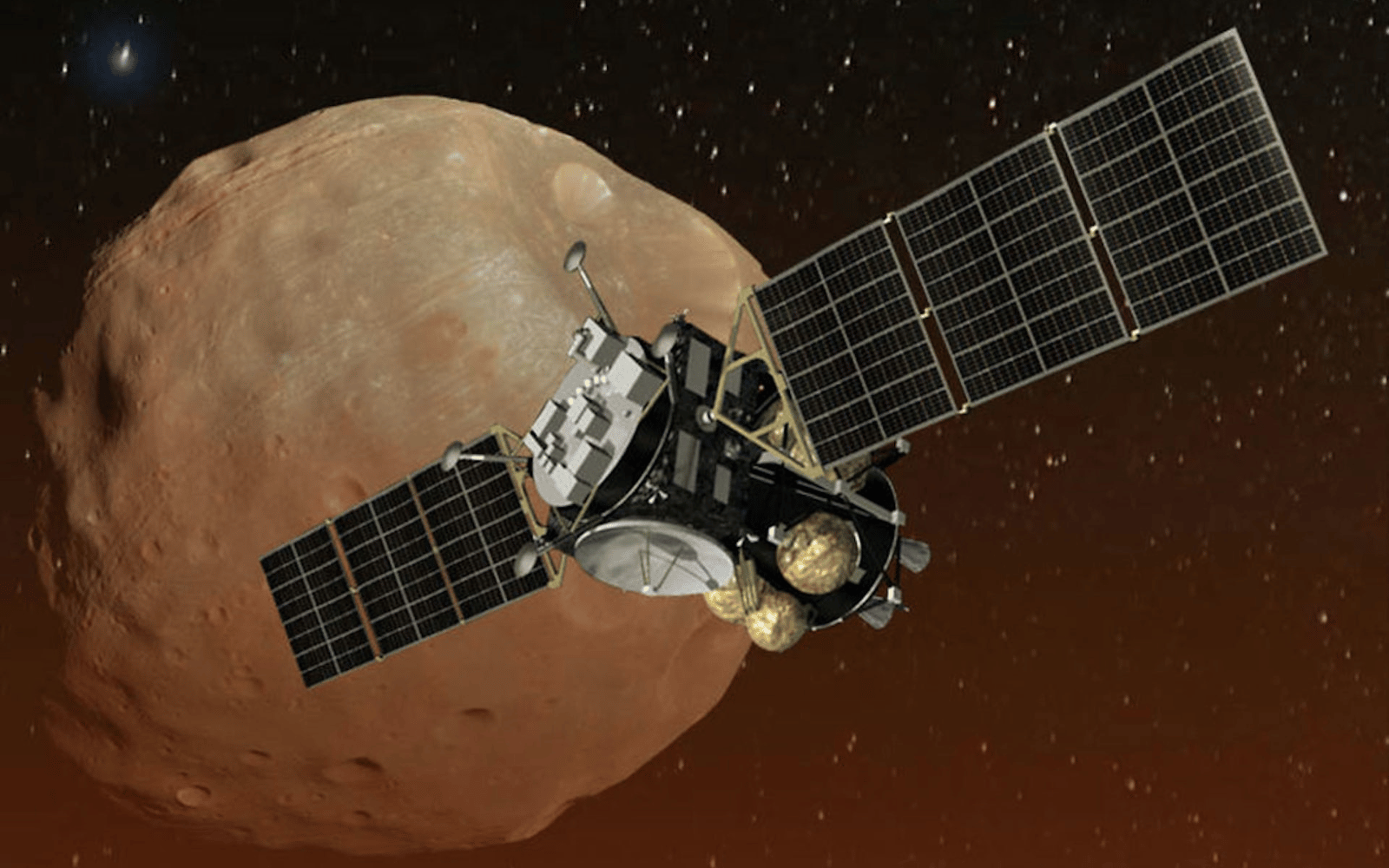The 2 small moons of Mars, Phobos (about 22km in diameter) and Deimos (about 13km in diameter), have been puzzling scientists for many years, with their origin remaining a matter of debate. Some have proposed that they could be made up of residual particles produced from a planet or massive asteroid smashing into the floor of Mars (#TeamImpact).
An opposing speculation (#TeamCapture), nonetheless, suggests the moons are asteroids that have been captured by Mars’s gravitational pull and have been trapped in orbit.
To resolve the thriller, we’ll want materials from the moons’ surfaces for analytical analyses on Earth. Fortunately, the Japan Aerospace Exploration Company (Jaxa) will launch a mission, named “Martian Moon eXploration” (MMX), to Phobos and Deimos in September 2024. The mission will probably be carried by a newly designed rocket, the H-3, which continues to be below growth.
The spacecraft is predicted to succeed in Martian orbit in 2025, after which it’ll orbit Phobos and at last acquire materials from its floor earlier than returning to Earth by 2029.
This can make it the following in a sequence of latest missions bringing materials from area again to Earth, following on from Jaxa’s profitable mission to asteroid Ryugu (Hayabusa2), in addition to Nasa’s Osiris-Rex mission to asteroid Bennu and the Chinese language House Company’s Chang’e 5 mission to the Moon.
Giveaways
If an affect origin did certainly happen, we’d anticipate finding comparable materials on Phobos to that which is discovered on Mars. Whereas we wouldn’t have any materials returned straight from Mars (but), we’re fortunate sufficient to have rock that has been ejected off its floor which ultimately discovered its solution to Earth.
These meteorites might subsequently be much like the fabric returned from Phobos, offering a unbelievable comparability.
Within the case of a captured asteroid origin, nonetheless, we usually tend to discover materials on Phobos that’s discovered on different asteroids in our Photo voltaic System. The prevailing speculation within the #TeamCapture group is that the moons are made up of the identical rock as meteorites, known as carbonaceous chondrite. Fortunately, we’ve got loads of such meteorites and samples that we may evaluate with the Phobos materials.
Evaluating meteorites and materials introduced again from Phobos will probably be a unbelievable software for serving to us perceive the origin of the 2 moons. As soon as we’ve got materials within the laboratory, rigorous analytical methods might be utilized to the samples.
One such method is oxygen isotope evaluation. Isotopes are variations of components whose nuclei have extra or fewer particles known as neutrons. Oxygen, for instance, has three steady isotopes, with atomic lots of 16, 17 and 18.
The sum of the isotopic ratios of oxygen-17/oxygen-16 and oxygen-18/oxygen-16 is denoted as Δ17O, and is attribute of particular father or mother objects. Relying on the place within the Photo voltaic System a rocky physique is fashioned, a definite oxygen composition is acquired and retained within the rocks. For instance, rocks from Earth have Δ17O of round 0, whereas meteorites from Mars have Δ17O of round ~0.3. Subsequently, rocks from Earth and Martian meteorites might be readily separated from each other.
Learn Extra: NASA’s Mars rovers may encourage a extra moral future for AI
If Phobos fashioned in the identical or not less than comparable location within the Photo voltaic System to Mars, we’d count on the composition of the fabric introduced again by MMX additionally to have Δ17O of round 0.3.
As talked about beforehand, #TeamCapture counsel a carbonaceous chondrite-like origin for Phobos. All recognized carbonaceous chondrites studied by scientists have revealed detrimental isotopic Δ17O, starting from -0.5 all the way in which all the way down to -4. Oxygen can subsequently be an especially highly effective software in deciphering the origin of the moons of Mars, and must be a excessive precedence for the mission as soon as materials is returned to Earth.
If Phobos does certainly symbolize an historic fragment of Mars, it may comprise essentially the most primitive of Martian materials. Mars has skilled a variety of processes which have altered the rocks on its floor, together with wind erosion and water alteration. Based mostly on options corresponding to dry river beds noticed from orbiters corresponding to Viking, it’s clear that water on Mars as soon as existed.
This water doubtless originated from a mixture of asteroids and comets, and volcanic exercise. Mars additionally retained a thick environment, which allowed water to be current as a liquid on the planet’s floor.
Phobos, however, has remained an airless physique the place processes corresponding to contamination from water haven’t occurred (although minor affect occasions might have taken place). Because of this samples returned from Phobos may present extraordinarily essential insights into the unique water content material of Mars, and a window to processes that occurred within the early Photo voltaic System.
MMX is among the most fun deliberate missions in area exploration. With lower than a yr to go, our fingers are already firmly crossed for a profitable launch, pattern acquisition, and pattern return. Many scientists together with myself would completely love the potential for in the future learning these samples.
